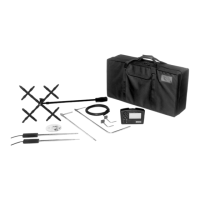What does Error Code 32 indicate on a TSI Instruments Power Tool?
- Ccheryl36Sep 3, 2025
If your TSI Instruments Power Tool displays Error Code 32, it means that while performing user calibration of the accessory temperature/humidity probe, the correct probe was not found. The accessory temperature/humidity probe was either not plugged in or is faulty.


